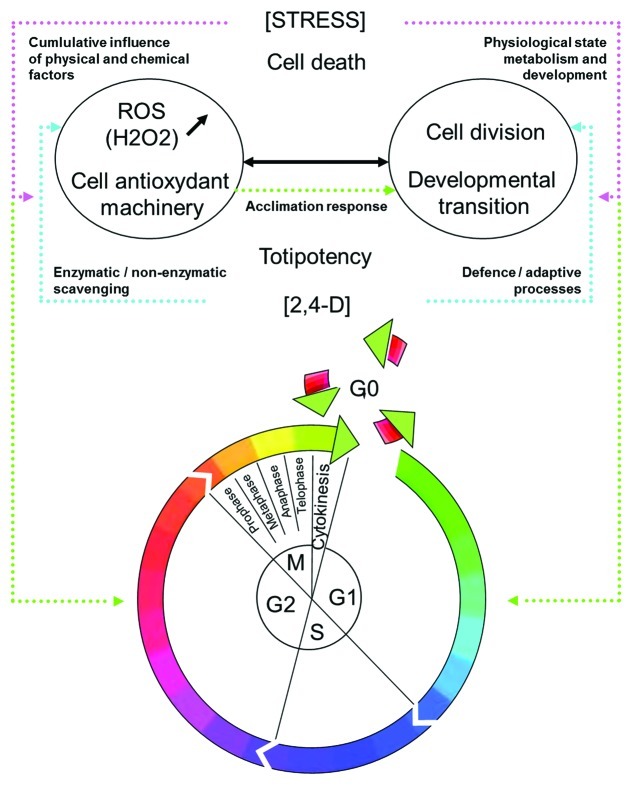Figure 3. Developmental switch, cell cycle activation and developmental transition: the 2,4-D induced developmental switch during somatic embryogenesis. The fate of individual cells (to enter the cell cycle, maintain proliferation competence, become quiescent, expand, differentiate or die) depends on the perception of various signals. Complementary interactions between stress, ROS/redox signaling and auxins control the plant cell responses during the regenerative pathway. The outcome depends on two main parameters: the level of stress and the physiological state of the cells (depending on the genotype, cell identity, developmental state). If the stress level exceeds cellular tolerance, the cells die. Both the higher level of intracellular H2O2 and the activity of cellular antioxidant machinery have been shown to be crucial for cell division activation and the expression of totipotency. The level of intracellular H2O2, cellular antioxidant machinery activity, defense responses and the rate of cell division activation are interdependent, and together are subordinated to the concentration of exogenous 2,4-D supplied54,58,72,107).

An official website of the United States government
Here's how you know
Official websites use .gov
A
.gov website belongs to an official
government organization in the United States.
Secure .gov websites use HTTPS
A lock (
) or https:// means you've safely
connected to the .gov website. Share sensitive
information only on official, secure websites.
